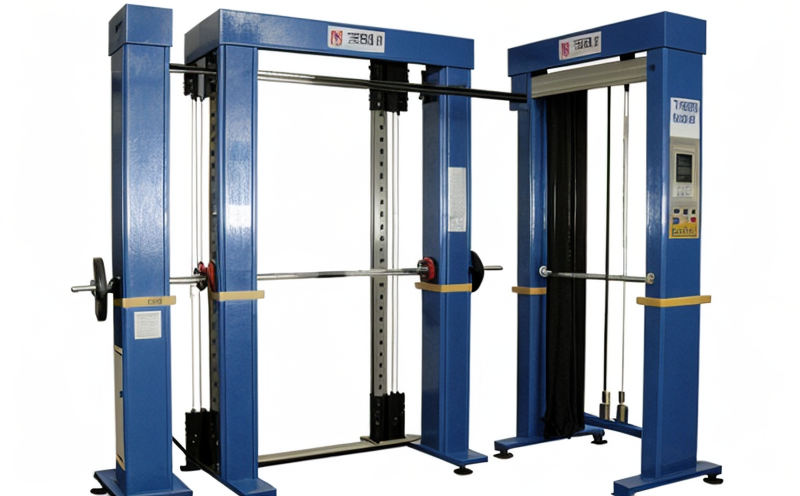DIN 53857 Fabric thread density determination
The DIN 53857 method is a standardized procedure used to determine the thread density of fabrics. This test is crucial for quality assurance in the textile industry, ensuring that fabric products meet specified standards and customer expectations. The method involves precise measurements and calculations based on sample preparation and instrumentation to accurately assess the number of threads per centimeter or inch.
Thread density plays a significant role in determining the durability, comfort, and appearance of textiles. High thread density can contribute to fabrics that are more durable and less prone to wear and tear, while lower densities may result in fabrics with a smoother feel but potentially reduced strength. This test is especially important for sectors such as apparel, home furnishings, and industrial textiles where fabric quality directly impacts product performance.
The procedure outlined in DIN 53857 involves several key steps: specimen preparation, measurement using appropriate instrumentation, and calculation of thread density. Specimens are typically cut from the fabric to ensure representative sample sizes for testing. The test setup includes a specialized instrument that can measure the length and width of individual threads or yarns accurately.
The accuracy of this method is paramount in ensuring consistent results across different samples and batches. Compliance with international standards like DIN 53857 helps fabric manufacturers maintain high-quality products and ensures customer satisfaction by meeting industry expectations. The test parameters are designed to be repeatable, allowing for reliable comparisons between various fabrics.
Understanding the thread density of a fabric is essential for quality control processes. It influences decisions regarding yarn selection, weave structure optimization, and overall product design. For instance, a designer might use higher thread densities in areas requiring greater strength, such as seams or stress points, while maintaining lower densities in less critical regions to enhance comfort.
Additionally, this method is vital for compliance with regulatory requirements and customer specifications. Many industries have specific thread density thresholds that must be met to ensure product safety, functionality, and aesthetic appeal. By adhering to standards like DIN 53857, manufacturers can avoid costly recalls and improve their reputation in the market.
The precision of this testing method is further enhanced by advanced textile analysis software, which can process raw data from measurements and provide detailed reports on thread density variations across different areas of a fabric. This capability allows for more informed decision-making during production processes, ultimately leading to better product quality.
Benefits
DIN 53857 Fabric thread density determination offers numerous advantages in the textile industry:
- Improved Product Quality: Ensures consistent and high-quality fabric production, leading to superior product performance.
- Enhanced Customer Satisfaction: By meeting specified standards, manufacturers can deliver products that exceed customer expectations.
- Compliance with Standards: Adhering to international standards like DIN 53857 helps avoid legal issues and maintains industry credibility.
- Informed Decision-Making: Detailed reports from this method provide valuable insights for optimizing production processes.
Quality and Reliability Assurance
The implementation of DIN 53857 fabric thread density determination supports robust quality control measures within the textile industry. This method ensures that each batch of fabric meets predefined specifications, thereby reducing variability in product performance.
By consistently applying this standard during manufacturing processes, companies can identify potential issues early on and implement corrective actions promptly. This proactive approach not only enhances overall quality but also minimizes waste and rework costs associated with substandard products.
The precision of DIN 53857 facilitates accurate comparisons between different batches or suppliers, allowing for more effective supply chain management. This ensures that raw materials consistently meet the required specifications, maintaining uniformity throughout production lines.
Customer Impact and Satisfaction
The benefits of DIN 53857 fabric thread density determination extend beyond internal operations; they also significantly impact customers. Consistent product quality translates to higher customer satisfaction, as customers receive reliable fabrics that perform as expected.
Manufacturers who comply with this standard can build stronger relationships with their clients by delivering products that consistently meet or exceed expectations. This trust fosters long-term partnerships and enhances brand loyalty among consumers.
In industries where fabric quality directly influences user experience, such as apparel and home furnishings, meeting thread density standards ensures that customers enjoy durable, comfortable, and aesthetically pleasing products. For instance, in the case of clothing, higher thread densities can lead to garments that last longer without stretching out or wearing thin.
Moreover, compliance with international standards like DIN 53857 instills confidence among both manufacturers and customers regarding product safety and functionality. This transparency helps mitigate risks associated with non-compliance, thereby protecting the reputation of brands operating in competitive markets.





